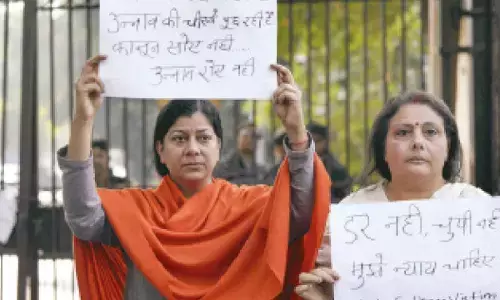The Mexican Maverick

The Mexican Maverick. In Hyderabad to conduct a Mexican Food Fiesta at restaurant La Cantina at Novotel Hyderabad Convention Centre, Chef Eduardo Pérez from Merida, Yucatan in Mexico, says he is blown away by the spices in India and their flavours are unlike anything he has tasted before.
Chef Eduardo Pérez disarms you with his warm smile. He is clearly delighted with how popular Mexican (Tex-Mex really) is in India. “It is the flavours which are familiar and therefore makes the food so popular - tomatoes for tang, chillies for the spice and flavour. Although most of the food is actually Tex-Mex and not really authentic Mexican. But people are loving the pure Mexican offerings and coming back for more”.
.jpg)
In Hyderabad to conduct a Mexican Food Fiesta at restaurant La Cantina at Novotel Hyderabad Convention Centre, Chef Eduardo Pérez from Merida, Yucatan in Mexico, says he is blown away by the spices in India and their flavours are unlike anything he has tasted before. “The flavour of coriander for instance is unmistakable, it simply bursts in your mouth even when just a pinch has been added unlike when I have used it before” he says.
Ingredients excite the chef and he talks passionately about the many kinds of chillies used in Mexican cooking. Talking about how corn, meats (such as beef, chicken and lamb)and chillies are the three most important elements of Mexican cooking. He says that without corn and the many varieties of chillies there can be no Mexican food. He speaks passionately about the various chillies used in Mexican cooking and each of them lending their uniqueness of flavour and heat to the dishes they are used in. The ‘guajillo’ chilli, for instance, is used because it has a mildly sweet taste and a hot finish which lends itself beautifully to flavour salsas. Chile de arbol for instance is what is used to flavour sauces, soups and stews as it lends a beautiful colour to the dish when used powdered. Each dish that he describes, calls for a particular type of chilli, either because of the heat quotient, colour or the flavour that the chilli imparts. His favourite Mole is unlike any sauce / salsa that one has tasted. All the ingredients, from the tomatoes, onions, chillies and garlic are chargrilled to give this spicy sauce a depth of flavour and smokiness.
“Ingredients clearly are the most exciting part of creating a dish and also the most limiting,” says Chef Eduardo. He admits that when vital ingredients are hard to source he chooses to use another recipe rather than making too many changes or substitutions. For instance, he was challenged by the task of creating main course recipes using only vegetables for the sizeable vegetarian population in India. There was no concept of vegetarian main course dishes in Mexican food earlier. But with growing food trends of vegetarianism and veganism a few options are being explored. For instance, one of the things the Chef has learnt during his visit, is that a batter made of chickpea flour (which is rarely seen in his home country) can be used to coat and fry dishes which otherwise use an egg dip. The use of corn kernals, potatoes, mushrooms and such vegetables are used along with cottage cheese and various cheeses to create dishes for non meat eaters.
The food, recipes and ingredients in Mexican cuisine change according to the terrain and what is locally available. the weather conditions also have an impact on the food. For instance, cheese and cured meats are used extensively in the plains as against the food on the coast which play havoc with traditional methods of preservation. The coastal areas make use of sea fish in their food whereas plains use a lot of river fish. He talks about changing food cultures and the erosion of old world food habits in Mexico where every part of the animal was eaten including the innards in a broth like soup that is served for breakfast just like in India we have Paya and Nihari. He says that soon these traditional dishes will only be served up in speciality and very expensive restaurants and not the way grandmas made it at home because of reduced popularity of these preparations.
Chef Eduardo has had quite a few encounters with what he calls “real Indian food” and loves jalebis and dosas in equal measure. He enjoys the buttery and indulgent Dal Makhni and cannot get enough of Naan, which he says is exquisite in India and unlike anything he has eaten in Indian restaurants across the world. As an instructor at the International School of Chefs at Merida, Yucatan, Mexico, he teaches his students another favourite of his, Palak Paneer.
A few classic Mexican dishes have gotten an Indian twist. The Chimichanga for instance, made usually from ground beef or red beans in the vegetarian version have been modified by using potatoes, tomatoes, onions, lemon juice and pani puri masala. While this is entirely the chef’s creation, it has been very well received and he is delighted to incorporate these classic Indian flavours.
The chef has been to various cities in India including Kolkata and Chandigarh, but clearly enjoyed the weather in Hyderabad.
















